#Duke friedrich wilhelm of mecklenburg-schwerin
Explore tagged Tumblr posts
Text

Duke Friedrich Wilhelm Victor August Ernst of Prussia and Duchess Cecilie Auguste Marie of Mecklenburg-Schwerin, last Crown Prince and Princess of Prussia
German vintage postcard
#marie#schwerin#briefkaart#vintage#ernst#german#crown#postcard#postkaart#prussia#sepia#princess#carte postale#crown prince#postal#cecilie auguste marie#wilhelm#mecklenburg-schwerin#duchess#photo#auguste#victor#mecklenburg#ansichtskarte#ephemera#duke#cecilie#historic#friedrich wilhelm victor#prince
4 notes
·
View notes
Text

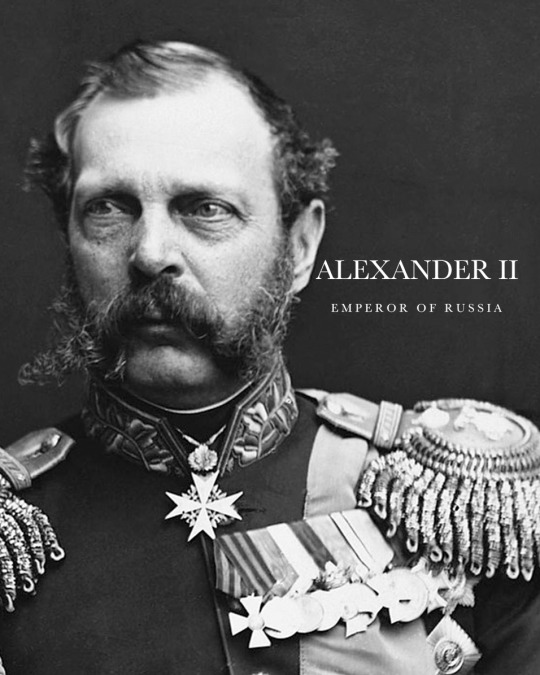
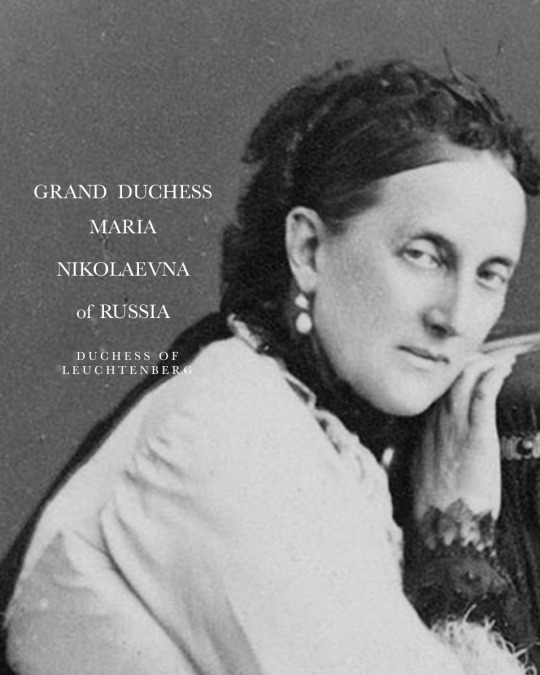
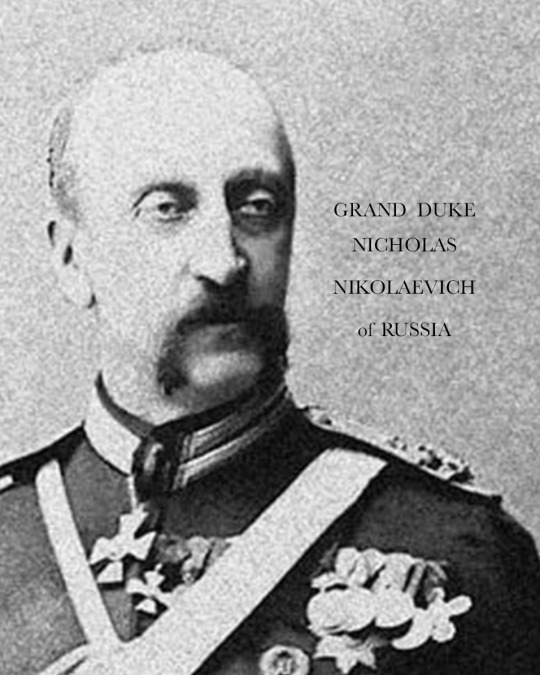

GODPARENTS OF GRAND DUKE ALEXEI MIKHAILOVICH
Grand Duke Alexei Mikhailovich was born on 28 December 1875 in Tbilisi, Tbilisi Governate, Russian Empire (now Georgia). He was the the sixth son and youngest child of Grand Duke Michael Nikolaevich of Russia, himself the youngest son of Emperor Nicholas I. He was the only Grand Duke to bear the name and patronymic of a Tsar: Alexei Mikhailovich. On 11 January (New Style) 1876, he was christened at Tbilisi by the Palace Priest and Confessor of Their Imperial Highnesses. He had seven godparents, as listed:
ALEXANDER II, EMPEROR OF RUSSIA - his uncle, the Russian Emperor stood as one of the godparents. He became the Emperor of All Russia in 1855. Alexander’s most significant reform as emperor was the emancipation of Russia’s serfs in 1861, for which he is known as Alexander the Liberator.
GRAND DUCHESS MARIA PAVLOVNA OF RUSSIA, GRAND DUCHESS CONSORT OF SAXE-WEIMAR-EISENACH - his aunt was one of his godparents. One of the daughters of Emperor Paul I, the grand duchess married a German prince Karl Friedrich, Grand Duke of Saxe-Weimar-Eisenach in 1804. She was an intellect, interested in both arts and sciences. German poet and novelist Johann Wolfgang von Goethe hailed her as one of the worthiest women of his time. She was the great-grandmother of Wilhelm II, German Emperor and Queen Victoria of Sweden.
GRAND DUKE NICHOLAS MIKHAILOVICH OF RUSSIA - his uncle, was one of his godparents. Trained for the military, as a Field Marshal he commanded the Russian army of the Danube in the Russo-Turkish War, 1877–1878.
GRAND DUCHESS MARIA PAVLOVNA OF RUSSIA - known as 'Maria Pavlovna the Elder', was the wife of his first cousin Grand Duke Vladimir Alexandrovich, and stood as one of his godparents. Born as Duchess Marie of Mecklenburg-Schwerin, her ancestors included Emperor Paul I of Russia. Upon her marriage to the grand duke, she became a prominent hostess in Saint Petersburg.
GRAND DUKE ALEXEI ALEXANDROVICH OF RUSSIA - his first cousin and namesake, one of the sons of Emperor Alexander II, was one of his godparents. Chosen for a naval career, Alexei Alexandrovich started his military training at an early age. By the age of 20 he had been appointed lieutenant of the Imperial Russian Navy, eventually becoming general-admiral.
GRAND DUCHESS ANASTASIA MIKHAILOVNA OF RUSSIA, GRAND DUCHESS OF MECKLENBURG-SCHWERIN - his sister, was one of his godparents. In 1879, when Alexei Mikhailovich was only four years-old, his only sister married a German prince, Friedrich Franz III of Mecklenburg-Schwerin (the elder brother of Grand Duchess Maria Pavlovna the Elder). Their children included Queen Alexandrine of Denmark and Crown Princess Cecile of Prussia. She was a strong-willed, independent and unconventional woman. She never became used to her new country where she was unpopular.
GRAND DUKE MICHAEL MIKHAILOVICH OF RUSSIA - one of his older brothers stood as another of his godparents. As Romanov tradition demanded, he followed a military career. He served in the Russo-Turkish War in 1877, became a Colonel and was adjutant at the Imperial court. In 1891 he contracted a morganatic marriage with Countess Sophie von Merenberg, a morganatic daughter of Prince Nicholas William of Nassau and a granddaughter of the Russian poet Alexander Pushkin. For contracting this marriage without permission, their first cousin Emperor Alexander III stripped him of his military titles and banished the couple from the Russian Empire. Alexei Mikhailovich never saw his brother again after his banishment.
Source
#alexei mikhailovich#romanovs#history#alexander ii#maria pavlovna the younger#maria nikolaevna#nicholas nikolaevich#alexei alexandrovich#anastasia mikhailovna#michael mikhailovich#godparents
25 notes
·
View notes
Text

Handsome Duke Friedrich Wilhelm of Mecklenburg-Strelitz, late 1880s.
#duke friedrich wilhelm of mecklenburg-schwerin#mecklenburg-schwerin#german royalty#german royal#1880s#late 1880s
13 notes
·
View notes
Text
national & dynastic orders
A national order is an order bestowed by a sovereign state as part of a national honours system. These orders, conferred for the merit of the recipient(s), are typically categorised as either orders of chivalry or orders of merit.
Source.
A dynastic order, or house order, is an order under royal patronage, bestowed by the head of a currently or formerly sovereign royal family as legitimate fons honorum. These are often considered part of the cultural patrimony of the royal family. They are orders of chivalry, and orders of merit just as those distributed by sovereign states, but dynastic orders were often founded or maintained to reward service to a monarch, or the monarch's subsequent dynasty.
An example of this difference is seen between the Royal Victorian Order, in which appointments are made as a personal gift of the sovereign, thus is a dynastic order, and the Order of the British Empire, in which appointments are made by the sovereign on the basis of recommendations by the Prime Minister, and thus a national order.
Source.
The Kingdom of Mecklenburg currently has six national and dynastic orders within its national honours system.
They are listed below in rank, highest to lowest, general information regarding orders, and a list of wearers within the Royal House and Family.
The Royal Order of the Wendish Crown
Founded: 1864 by Friedrich Franz II of Mecklenburg-Schwerin and Friedrich Wilhelm II of Mecklenburg-Strelitz
Royal Order
Named for the Wendish Crown, an archaeological discovery in the 19th century, given an invented tradition as part of the history of Mecklenburg. The Wendish Crown can be found on the full coat of arms of the House of Mecklenburg crowning the central helm and on the chain of the Order circling the shield
Only available to senior members of the Royal House, senior foreign royals, foreign heads of state
Officially a separate order to the Grand Ducal Order, since 1919
Reorganised into two ranks ‘Grand Cross with the Crown in Ore’ and ‘Grand Cross with the Crown in Gold’
The Crown in Ore is for senior members of the Royal House, foreign heads of states and the heir/ess apparent
The Crown in Gold is for lesser members of the Royal House and Family, the consorts of heads of states and the consorts of the heir/ess apparent
Number is unlimited
The ‘Crown’ referred to is the Wendish Crowns in the centre of the badge and star (as seen in the sidebar), and the four Crowns within the chain. However, the crown on the badge is made of diamonds for female recipients of the Crown in Ore
Only the senior rank, Crown in Ore, is awarded with the chain of the Order
Ribbon: Light blue, with outer yellow and red stripes
Motto: Per Aspera Ad Astra (Through Hardships To The Stars)
Similar to the Danish Order of the Elephant and the Swedish Order of the Seraphim
Wikipedia
House of Mecklenburg-Strelitz website
Pictures of the Chain
The Royal Order of the Griffin
Founded: 1884 by Friedrich Franz III of Mecklenburg-Schwerin, in 1904, Adolf Friedrich V of Mecklenburg-Strelitz became co-Grand Master of the Order
Royal Order & Civilian Order
Named for the griffin on the House of Mecklenburg’s coat of arms, representing the Principality of Schwerin and the Lordship of Rostock
Available to lesser members of the Royal House or Family, or other female-line descendants, lesser foreign royals, foreign heads of government and national and non-national senior public servants, who have contributed to the kingdom
Officially a separate order to the Grand Ducal Order, since 1919
Some ranks’ numbers are limited
Ribbon: Yellow, with outer narrow red and yellow stripes
Motto: Altior Adversis (Against All Odds)
Similar to the British Order of the Bath - Civilian Division
Wikipedia
House of Mecklenburg-Strelitz website
The Order of the Obotriti
Founded: 1926 by Heinrich Ludwig I of Mecklenburg
Military Order
Named for the Slavic tribe which once ruled present-day western Mecklenburg. The founder of the House of Mecklenburg, Pribislav, was the last Obotrite prince
Available to members of the Royal House, or other female-line descendants, foreign royals and senior military officers/soldiers, who have seen service/command
Some ranks’ numbers are limited
Motto: Nec Temere, Nec Timide (Neither Rashly Nor Timidly)
Ribbon: Dark blue, with outer yellow, and narrow white and dark blue stripes
Similar to the British Order of the Bath - Military Division
The Order of the Veleti
Founded: 1926 by Heinrich Ludwig I of Mecklenburg
Cultural Order
Named for the Slavic tribe which once ruled present-day eastern Mecklenburg
Available to people who contribute to the arts, sciences, literature and culture of the kingdom
Some ranks’ numbers are limited
Motto: Non Pro Nobis Laboramus (We Labour Not For Ourselves)
Ribbon: White, with outer narrow light blue, red and yellow stripes
Similar to the French Order of Arts and Letters
The Royal Order of Johann Albrecht
Founded: 1920 by Heinrich Ludwig I of Mecklenburg
Royal Order
Named for Heinrich Ludwig I’s father, Duke Johann Albrecht of Mecklenburg-Schwerin, who had died early that year
Available to all who provide service to the Crown, and is usually considered to be a personal gift from the monarch, but can be awarded on behalf of any member of the Royal House or Family
Number is unlimited
Motto: Ioannes Albertus (Johann Albrecht)
Ribbon: Red, with outer white and light blue stripes
Similar to the British Royal Victorian Order
The Order of Mecklenburg
Founded: 1991 by Wilhelm Franz I of Mecklenburg
Civilian, Military and Cultural Order
Named for the Kingdom of Mecklenburg, following its reunification and union with the former Province of Vorpommern
Available to those who make a significant achievement for the kingdom
Number is unlimited
Cannot be awarded to members of the Royal House or Family
Motto: Unitatis In Posterum (Unity Into The Future)
Ribbon: Yellow, with outer white, and narrow red and light blue stripes
Similar to the Order of the British Empire
All orders can be made available to nationals and non-nationals of the kingdom
Royal Orders are awarded by the monarch by their own volition or nomination by members of the Royal House and Family, without interference by the government.
Civilian, Military and Cultural Orders are awarded by the monarch by their own volition, by recommendation of the government or nomination of nationals and non-nationals. The monarch reserves the right to deny any recommendations brought before them.
All orders, except the Order of the Wendish Crown and the Royal Family Orders, come with the rank Knight (Ritter for men and Ritterin for women) and the style within the Mecklenburgish nobility of ‘His/Her Excellency’.
Normally orders are to be returned after the death of the recipient (some used orders are placed in various museums around the nation and preserved for future generations, others are re-gifted), some are given to the nation of the recipient if the monarch wishes (i.e. for very important national figures such as presidents or monarchs).
Recipients of the orders are usually awarded as part of the New Year’s Honours on 1 January or Kingdom Day’s Honours on 28 June, each year, or during state visits. However, Royal Orders can be awarded at any time.
The monarch is the Grand Master of all national and dynastic orders, and is thus automatically a member, even in cases where they did not receive the Order formally. In other words, Queen Karolina Augusta I was awarded the Grand Cross with the Crown in Ore of the Royal Order of the Wendish Crown by her father when she became the heiress apparent on 1 January 1990, but was granted no further orders, aside from her father’s Royal Family Order, prior to his father’s death.
This means that outside of ceremonies and services dedicated to a particular Order which Karolina Augusta attends in her capacity as Grand Master, Karolina Augusta cannot wear the insignia of the Royal Orders of the Griffin, of Johann Albrecht, or the Orders of the Obotriti, the Veleti, or of Mecklenburg when the dress code requires orders to be worn. Despite being queen, Karolina Augusta is less adorned than most of her family during official events.
For further information about orders, how they are worn, etc, please read here and here at Order of Splendor. I highly recommend checking out these links, they are full of fantastic information.
The Royal House of Mecklenburg and the Ducal House of Mecklenburg-Strelitz
Following the separation of the Order of the Wendish Crown and the Order of the Griffin into Royal and Ducal Orders in 1919, it has been a tradition for the heads of the two branches to award the other their version of the Grand Cross of the Order of the Griffin, with each version having differing insignia.
Borwin, Duke of Mecklenburg-Strelitz, became head of the Strelitz branch in 1996, but it was decided to delay awarding him with the Royal Order of the Griffin until the regency finished in 2006. On 17 September, 2006, The Queen of Mecklenburg and The Duke of Mecklenburg-Strelitz exchanged Grand Crosses of the Order of the Griffin.
During official events requiring orders to be worn, the Ducal Order of the Griffin will take precedence after the Royal Order of the Wendish Crown when worn by The Queen of Mecklenburg, while the Royal Order of the Griffin will take precedence after the Ducal Order of the Wendish Crown when worn by The Duke of Mecklenburg-Strelitz.
The head of the Schwerin branch of the House of Mecklenburg, currently Prince Klaus Wilhelm, is not a Grand Master to any order, but previous heads of the Schwerin branch have been awarded Ducal Orders in the past out of courtesy. Prince Klaus Wilhelm has yet to receive either Ducal Order since assuming headship of the Schwerin branch in 2001.
Orders worn by The Royal House and Family of Mecklenburg, and their descendants and spouses (as of July 2014):
The Royal Order of the Wendish Crown
HM Queen Karolina Augusta I of Mecklenburg, Crown in Ore
HM Queen Eleonora of Mecklenburg, Crown in Ore
HRH Prince Klaus Wilhelm of Mecklenburg, Crown in Ore
HRH Prince Albrecht Gustav of Mecklenburg, Crown in Ore
HRH Princess Veronica of Mecklenburg, Crown in Gold
HRH Princess Heinrike Franziska of Mecklenburg, Crown in Ore
HRH Princess Elisabeth Mathilde of Mecklenburg, Crown in Ore
HRH Princess Marie Anastasia of Mecklenburg, Crown in Ore
HRH Princess Cecilie Auguste of Mecklenburg, Crown in Ore
HRH Princess Alexandrine Luise of Mecklenburg, Crown in Ore
HRH Princess Marie Elisabeth of Mecklenburg, Crown in Ore
The Royal Order of the Griffin
HRH Prince Paul Ludwig of Mecklenburg, Knight Grand Cross
HRH Princess Evelyn of Mecklenburg, Dame Grand Cross
HSH Hereditary Prince Michael of Schwarzburg, Knight Grand Cross
HH Prince Alexander of Schleswig-Holstein-Sonderburg-Glücksburg, Knight Grand Cross
HH Prince Harald of Denmark, Knight Grand Cross
HH Princess Helene of Denmark, Dame Grand Cross
HH Princess Feodora of Liechtenstein, Dame Grand Cross
HSH Prince Karl Emmeran of Liechtenstein, Knight Grand Cross
The Order of the Obotriti
HRH Prince Albrecht Gustav of Mecklenburg, Knight Grand Cross
The Order of the Veleti
HSH Prince Konstantin of Hohenlohe-Langenburg, Commander
HSH Princess Amalia of Hohenlohe-Langenburg, Commander
The Royal Order of Johann Albrecht
HM Queen Eleonora of Mecklenburg, Dame Grand Cross
HRH Prince Klaus Wilhelm of Mecklenburg, Knight Grand Cross
HRH Prince Albrecht Gustav of Mecklenburg, Knight Grand Cross
HRH Princess Veronica of Mecklenburg, Dame Grand Cross
HRH Princess Heinrike Franziska of Mecklenburg, Dame Grand Cross
HRH Princess Elisabeth Mathilde of Mecklenburg, Dame Grand Cross
HRH Princess Marie Anastasia of Mecklenburg, Dame Grand Cross
HRH Princess Cecilie Auguste of Mecklenburg, Dame Grand Cross
HRH Princess Alexandrine Luise of Mecklenburg, Dame Grand Cross
HRH Princess Marie Elisabeth of Mecklenburg, Dame Grand Cross
HSH Hereditary Prince Michael of Schwarzburg, Knight Grand Cross
HH Prince Alexander of Schleswig-Holstein-Sonderburg-Glücksburg, Knight Grand Cross
HSH Prince Konstantin of Hohenlohe-Langenburg, Knight Grand Cross
HSH Princess Amalia of Hohenlohe-Langenburg, Dame Grand Cross
HH Prince Harald of Denmark, Knight Grand Cross
HH Princess Helene of Denmark, Dame Grand Cross
HH Prince Oskar of Denmark, Knight Grand Cross
HH Princess Feodora of Liechtenstein, Dame Grand Cross
HSH Prince Karl Emmeran of Liechtenstein, Knight Grand Cross
The Order of Mecklenburg
Members of the Royal House and Family are not eligible to receive this Order, however some of their descendants are, though none have received the Order of Mecklenburg to date.
1 note
·
View note
Text
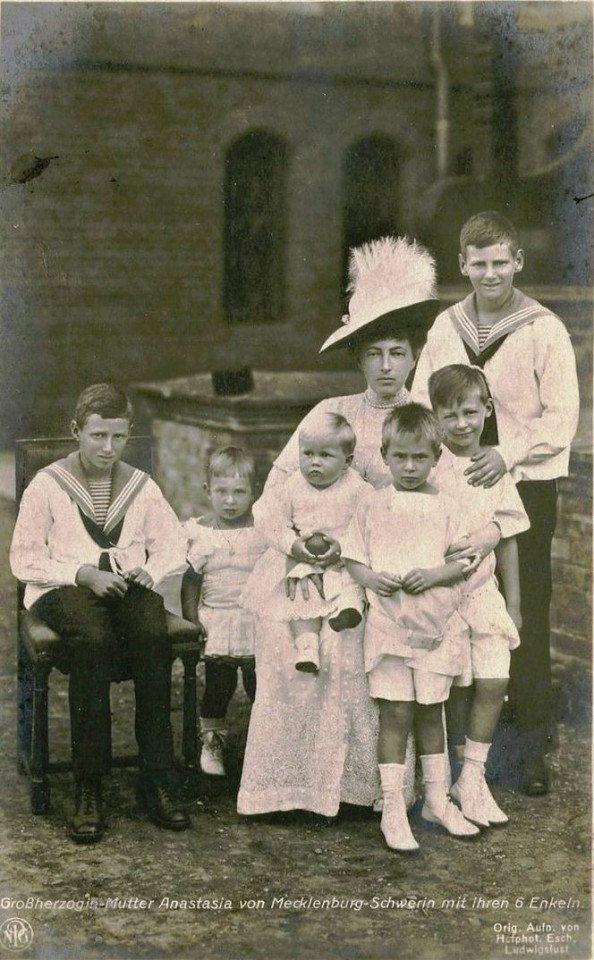
Grand Duchess Anastasia Mikhailovna Romanova,Grand Duchess of Mecklenburg-Schwerin with six of her grandsons :
•Prince Frederick of Denmark (the eldest boy in sailor top) the future King Frederick lX of Denmark,father of the present Queen of Denmark,Margarethe
•Prince Knud of Denmark (the older boy in sailor top)
•Prince Wilhelm of Prussia
•Prince Louis Ferdinand of Prussia who later married Princess Kira Kirillovna Romanova of Russia,daughter of Grand Duke Kirill Vladimirovich Romanov of Russia and Grand Duchess Viktoria Feodorovna Romanova of Russia.
•Prince Hubertus of Prussia
•Prince Friedrich Georg of Prussia.
1 note
·
View note
Text
Vladimirovichi Edit Emperor Nicholas I (1796-1855) = Princess Charlotte of Prussia (1798-1860) | +-- Emperor Alexander II (1818-1881) = Princess Marie of Hesse (1824-1880) | +-- Grand Duke Vladimir Alexandrovich (1847-1909) = Duchess Marie of Mecklenburg-Schwerin (1854-1920) | +-- Grand Duke Alexander Vladimirovich (1875-1877) | +-- Grand Duke Cyril Vladimirovich (1876-1938) | = Princess Victoria Melita of Edinburgh (1875-1936) | | | +-- Princess Maria Kirillovna (1907-1951) cr. Grand Duchess of Russia[citation needed] | | = Friedrich Karl, Prince of Leiningen (1898-1946) | | | +-- Princess Kira Kirillovna (1909-1967) cr. Grand Duchess of Russia[citation needed] | | = Louis Ferdinand, Prince of Prussia (1907-1994) | | | +-- Prince Vladimir Kirillovich (1917-1992) cr. Grand Duke of Russia[citation needed] | = Princess Leonida Bagration-Moukhransky (1914-2010) | | | +-- Grand Duchess Maria Vladimirovna[citation needed] (b. 1953) | = Prince Franz Wilhelm of Prussia (b. 1943)cr. Grand Duke of Russia div. | | | +-- Prince George of Prussia (b. 1981) cr. Grand Duke of Russia[citation needed] | +-- Grand Duke Boris Vladimirovich (1877-1943) | = Zinaida Rashevskaya (1898-1963) | +-- Grand Duke Andrei Vladimirovich (1879-1956) | = Mathilde Kschessinska (1872-1971) cr. Princess Romanovskya-Krassinskya | | | +-- Prince Vladimir Romanovsky-Krasinsky (1902-1974) | +-- Grand Duchess Elena Vladimirovna (1882-1957) = Prince Nicholas of Greece and Denmark (1872-1938)
3 notes
·
View notes
Text

Freidrich Franz Michael Wilhelm Nikolaus Franz-Joseph Ernst August Hans, Hereditary Grand Duke of Mecklenburg-Schwerin Christian Ludwig Ernst August Maximilian Johann Albrecht Adolf Friedrich, Duke of Mecklenburg-Schwerin Ernst August Christian Georg, Duke of Brunswick Georg Wilhelm Ernst August Friedrich Axel, Prince of Hanover
German vintage postcard, mailed in 1917 to Coburg
#historic#michael wilhelm nikolaus franz-joseph ernst#georg wilhelm ernst#photography#vintage#christian#sepia#coburg#ludwig ernst#photo#ernst#briefkaart#nikolaus#johann#prince#august#adolf#friedrich#1917#hanover#ansichtskarte#postcard#michael#albrecht#mailed#ludwig#grand#christian georg#mecklenburg#schwerin
5 notes
·
View notes
Text
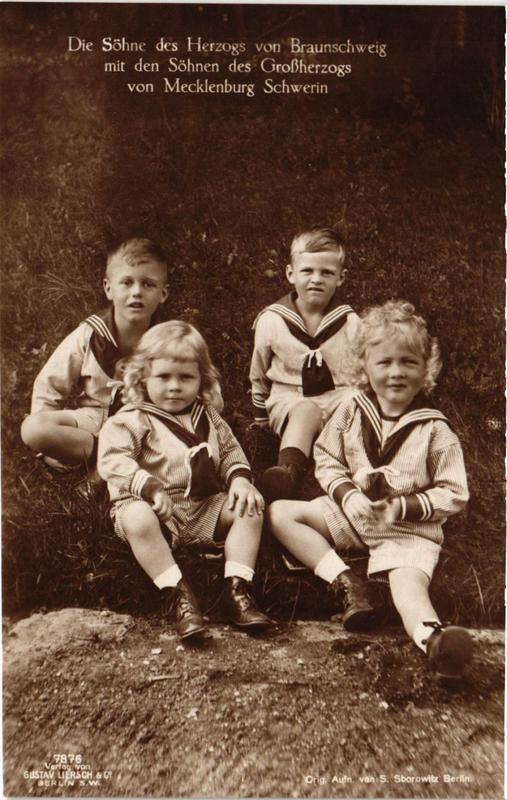
Ernst August, Hereditary Prince of Brunswick, Prince of Hanover Prince Georg Wilhelm Ernst August Friedrich Axel of Hanover Friedrich Franz, Hereditary Grand Duke of Mecklenburg-Schwerin Duke Christian Ludwig Ernst August Maximilian Johann Albrecht Adolf Friedrich of Mecklenburg-Schwerin
German vintage postcard
#christian ludwig ernst#christian#postkaart#axel#friedrich#friedrich axel#maximilian johann albrecht adolf friedrich#carte postale#franz#briefkaart#friedrich franz#georg#old#sepia#grand#wilhelm#mecklenburg#postkarte#vintage#johann#postal#duke#albrecht#brunswick#georg wilhelm ernst#photography#august#adolf#ernst#schwerin
2 notes
·
View notes
Text

Duke Friedrich Wilhelm of Mecklenburg-Schwerin (1871-1897), 1890s.
He was an elder brother of Henry, Prince Consort of the Netherlands, husband of Queen Wilhelmina.
#duke friedrich wilhelm of mecklenburg-schwerin#mecklenburg-schwerin#german royalty#german royal#1890s
12 notes
·
View notes
Text

Royal Gathering. Early 1890s.
Front row: Kaiser Wilhelm and Grand Duke Frederick Francis III of Mecklenburg-Schwerin.
Back row: Princess Irene of Prussia née Hesse-Darmstadt, Duke Friedrich Wilhelm of Mecklenburg-Schwerin and Prince Henry of Prussia.
It's curious to see Kaiser Wilhelm II with Grand Duke Frederick Francis because the latter had a reputation to be very shy. Some years later in 1905, Crown Prince Wilhelm who was the eldest son of Kaiser Wilhelm II married Duchess Cecilie of Mecklenburg-Schwerin, Frederick Francis's youngest daughter.
Grand Duke Frederick Francis's younger half-brother, Duke Friedrich Wilhelm, was so handsome, it's a shame he died so young. I read that he was engaged to Princess Feodora of Schleswig, youngest sister of Empress Augusta Victoria.
Source: pinterest
#kaiser wilhelm ii#prince henry of Prussia#Grand duke Frederick Francis III of Mecklenburg-Schwerin#Duke Friedrich Wilhelm of Mecklenburg-Schwerin#prussia#germany#german royal#german royalty#mecklenburg-schwerin#1890s#1890s fashion#early 1890s#princess henry of prussia#princess irene of hesse and by rhine
61 notes
·
View notes
Text

Grand Duke Frederick Francis II of Mecklenburg-Schwerin's children from his third marriage to Princess Marie of Schwarzburg-Rudolstadt. 1890s.
From left to right: Duke Friedrich William (1871-1897), Duke Henry (1876-1934), Duchess Elisabeth Alexandrine (1869-1955) and Duke Adolf Friedrich of Mecklenburg-Schwerin (1873-1969).
"In a storm on the morning of September 22, 1897, the torpedo boat S 26 capsized on the way home from an exercise by the torpedo boat division in the Elbe estuary near Cuxhaven, at approximately the height of the lightship Elbe 1.
The S 26 torpedo boat was caught aft by a sea approaching behind, then thrown sideways and capsized. Immediately after the accident, the division boat D 3 of Captain Schaefer tried unsuccessfully to tow the capsized boat. The rescue operation failed due to the steadily increasing swell. With the keel up, the boat swam about an hour before the stern straightened and then sank. Friedrich Wilhelm and seven of his crew drowned, some of them trapped in the false deck. Eight crew members survived and were recovered. They probably only survived because their commander had ordered the wearing of life jackets early on after the loss of the torpedo sailor Schwabrowski from S 27".
Source: internet
#princess marie of Schwarzburg-Rudolstadt#Duchess Elisabeth Alexandrine of mecklenburg-schwerin#duke friedrich wilhelm of Mecklenburg-Schwerin#Duke adolf friedrich of mecklenburg-schwerin#Duke henry of mecklenburg-schwerin#mecklenburg-schwerin#german royal#german royalty#1890s#prince consort henry of the netherlands
22 notes
·
View notes
Text

The Dowager Grand Duchess of Mecklenburg-Schwerin née Princess of Schwarzburg-Rudolstadt (1850-1922) with her two eldest children, Duchess Elisabeth Alexandrine (1869-1955) and Duke Friedrich Wilhelm (1871-1897). 1893.
Marie was Grand Duchess Maria Pavlovna's stepmother and Queen Juliana's paternal grandmother through her youngest son, Prince Heinrich ( Prince Consort to Queen Wilhelmina of The Netherlands).
Source: pinterest
#grand duchess marie of mecklenburg-schwerin#dowager grand Duchess marie of Mecklenburg-Schwerin#princess marie of Schwarzburg-Rudolstadt#Duchess Elisabeth alexandrine of Mecklenburg-Schwerin#grand duchess Elisabeth alexandrine of Oldenburg#Duke friedrich wilhelm of mecklenburg-schwerin#mecklenburg-schwerin#Schwarzburg-Rudolstadt#german romanticism#german royal#german royalty#germany#1890s#1890s fashion#1893#family
16 notes
·
View notes
Text
Royal Wedding on 22 January 1937 at Christiansborg Palace in Copenhagen, Denmark.
Count Luitpold of Castell-Castell (32) and Princess Alexandrine-Louise of Denmark (22).
The bridegroom was the son of Count Otto Friedrich of Castell-Castell and his wife, Princess Amélie of Löwenstein-Wertheim-Freundenberg.
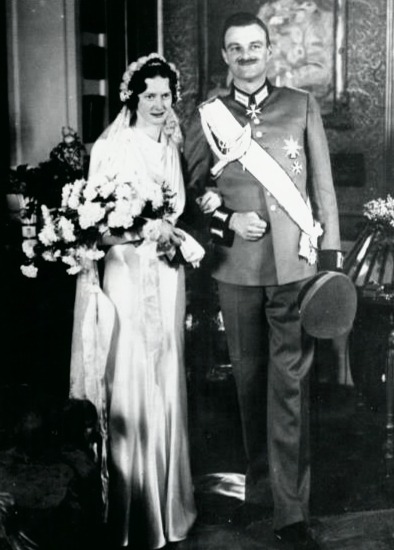
The bride was the youngest daughter of Prince Harald of Denmark and his wife, Princess Helena Adelaide of Schleswig-Holstein-Sonderburg-Glücksburg.
The couple met for the first time in Berlin during the 1936 Summer Olympics. Following their first meeting, Luitpold and Alexandrine-Louise spent nearly every day together. Before her departure from Berlin, Luitpold proposed marriage and Alexandrine-Louise accepted. At the time of their engagement announcement, Luitpold was a law student residing in Munich.
The beautiful bride

The wedding ceremony

The bride and bridegroom with the bridesmaids


The bride and her parents
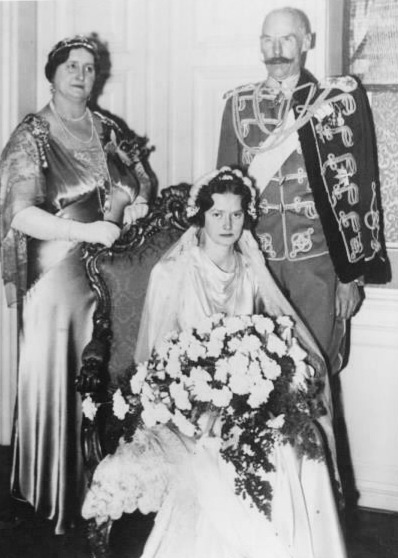
The bride and her father
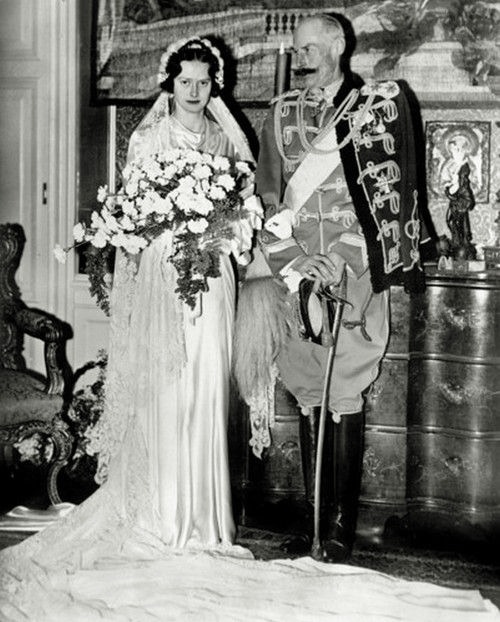
The wedding guests
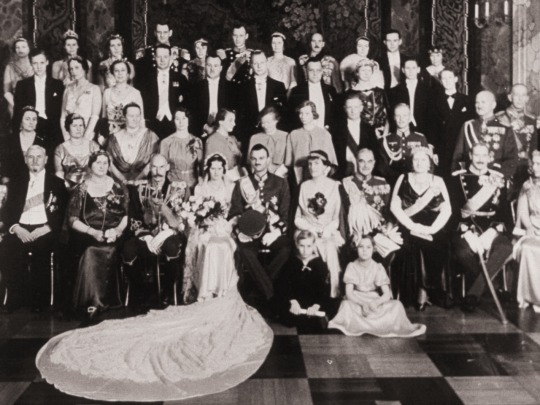

Footage of the wedding on nitrate film is preserved by the Danish Film Institute in their bunker archive for nitrate film at Store Dyrehave in Hillerød. According to the film archivist Karin Bonde Johansen regarding the scenes captured by the film, "the atmosphere looks cheerful and wild looking, but unfortunately there is no audio to the footage."
#princess alexandrine-louise of denmark#count luitpold of castell-castell#prince harald of denmark#princess harald of denmark#king christian x of denmark#queen alexandrine of denmark#princess feodora of denmark#duchess thyra of mecklenburg-schwerin#princess louise of prussia#king frederick ix of denmark#queen ingrid of denmark#princess thyra of denmark#count otto friedrich of castell-castell#countess amélie of castell-castell#princess alexandra victoria of schleswig-holstein-sonderburg-glücksburg#princess axel of denmark#duke wilhelm friedrich of schleswig-holstein#prince gustav of denmark#prince albert of schleswig-holstein-sonderburg-glücksburg#prince christian of schaumburg-lippe#count hans of solms-baruth#countess hans of solms-baruth#princess friedrich sigismund of prussia#hereditary prince knud of denmark#princess caroline-mathilde of denmark#prince viggo of denmark#princess dagmar of denmark#royal weddings#castell-castell#1937
15 notes
·
View notes
Text

Prussian-Hannoverian and Mecklenburg-Schwerin Royal gathering in 1920.
Back row: Prince Wilhelm of Prussia, Grand Duchess Alexandra of Mecklenburg-Schwerin, Duke Ernest Augustus of Brunswick, Duchess Victoria Louise of Brunswick, Prince Christian of Hanover seated on his mother's lap, Grand Duke Frederick Francis IV of Mecklenburg-Schwerin, Crown Princess Cecilie of Prussia and Princess Cecilie seated on her mother's lap.
Middle row: Hereditary Prince Ernest Augustus of Brunswick, Prince Friedrich of Prussia, Duke Christian Louis of Mecklenburg-Schwerin, Princess Alexandrine of Prussia and Prince Hubertus of Prussia.
Front row: Hereditary Grand Duke Frederick Francis of Mecklenburg-Schwerin, Prince George William of Hanover, Duchess Thyra of Mecklenburg-Schwerin, Prince Louis Ferdinand of Prussia and Princess Frederica Louise of Hanover seated on her cousin's lap.
#grand duke frederick francis iv of mecklenburg-schwerin#grand duchess alexandra of mecklenburg-schwerin#duke ernest augustus of brunswick#duchess victoria louise of brunswick#crown princess cecilie of prussia#prince wilhelm of prussia#prince louis ferdinand of prussia#prince hubertus of prussia#prince friedrich of prussia#princess alexandrine of prussia#princess cecilie of prussia#hereditary grand duke frederick francis of mecklenburg-schwerin#duke christian louis of mecklenburg-schwerin#duchess thyra of mecklenburg-schwerin#hereditary prince ernest augustus of brunswick#prince ernest augustus of hanover#prince george william of hanover#princess frederica louise of hanover#prince christian of hanover#hanoverian royal family#prussian royal family#mecklenburg-schwerin#german royalty#german royal#1920#1920s
14 notes
·
View notes
Text

Kaiser Wilhelm II and some family members cutting wood logs, Netherlands, c. 1930.
From left to right: Duke Christian Louis of Mecklenburg-Schwerin, Prince Wilhelm of Prussia, Kaiser Wilhelm II, behind him is Prince Louis Ferdinand of Prussia, Hereditary Grand Duke Frederick Francis of Mecklenburg-Schwerin and Prince Eitel Friedrich of Prussia.
The Mecklenburg-Schwerin brothers were Crown Princess Cecilie's nephews.
#kaiser wilhelm ii#prince wilhelm of prussia#prince louis ferdinand of prussia#prince eitel friedrich of prussia#hereditary grand duke frederick francis of mecklenburg-schwerin#duke christian louis of mecklenburg-schwerin#1930s#1930#german royalty#german royal
35 notes
·
View notes
Text

Danish-Prussian Royal Family in 1925.
From left to right: Prince Louis Ferdinand of Prussia, Grand Duke Frederick Francis IV of Mecklenburg-Schwerin, Princess Friedrich Sigismund of Prussia, Crown Princess Cecilie of Prussia, Queen Alexandrine of Denmark, Prince Hubertus of Prussia, Grand Duchess Alexandra of Mecklenburg-Schwerin, Crown Prince Wilhelm of Prussia, Prince Wilhelm of Prussia, King Christian X of Denmark and Prince Friedrich of Prussia.
#king christian x of denmark#queen alexandrine of denmark#crown prince wilhelm of prussia#crown princess cecilie of prussia#grand duke frederick francis iv of mecklenburg-schwerin#grand duchess alexandra of mecklenburg-schwerin#princess friedrich sigismund of prussia#prince wilhelm of prussia#prince louis ferdinand of prussia#prince hubertus of prussia#prince friedrich of prussia#prussian royal family#danish royal family#1925#1920s
31 notes
·
View notes